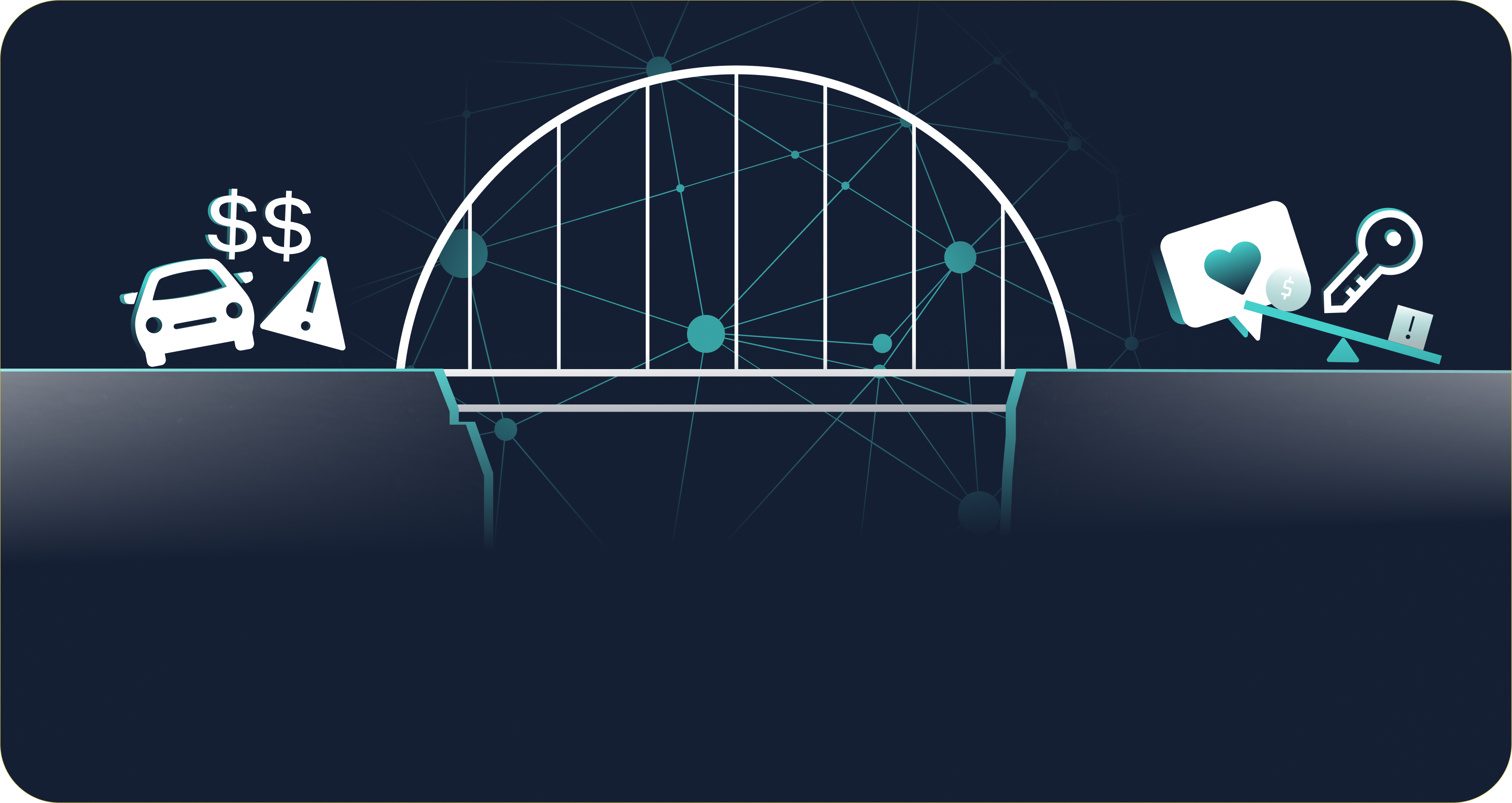Arrive efficiently at your lending destination
Every important journey needs a navigator, so let Zest AI help you in your lending decisions
When a borrower comes to your institution seeking a loan or other financial service, they’re in the driver’s seat. With their eyes focused on the road ahead, your institution is the vehicle that helps them figure out ways to improve their financial health and accomplish goals like financing their cars (non-figurative), homes, and lifestyles.
Lenders are the trusted navigators in their borrowers’ financial journeys. You are in the passenger’s seat, directing your borrower on where to turn and finding the clearest path forward. The navigation tools you’re using make a world of a difference — will your journey together be smooth, with everyone arriving at the destination happy, healthy, and on-time? Or will that journey become bumpy, inefficient, and exclude a lot of people?
Much like a GPS, credit underwriting tools have become more sophisticated over the years. Remember using those giant paper maps when you set off on a road trip? They showed the general path you needed to take, but you couldn’t fold them back up and it was easy to lose your place. If you were suddenly faced with a road closure or traffic, finding an alternative path could be difficult.
When the internet came into the picture, we finally had sites like Mapquest to help guide us. You could see general timing and mileage, information focused on the route you needed to take, and no more folding! Mapquest, while more convenient, still provided the same, basic, static information as that giant map — and at the end of the day, you still had printed sheets on paper to flip through.
Today, with apps like Google and Apple Maps and Waze, you are not only getting to your destination, but you have so much more information to ensure the fastest, easiest routes as well as additional context that helps with time, road closures, speed checks, hazards and even local gas prices along the way.
The national credit score model is much like these antiquated methods. Sure, the delivery of scores has become increasingly more convenient, but it only gives you a limited amount of information — which leaves out critical factors that can make the difference between helping your community reach their destination and ending up on the side of the road out of gas.
Likewise, using an optimized and automated credit underwriting tool provides an instant, detailed look at fundamental elements of financial health. As your navigation tools become sharper, stronger, and more efficient, you can easily maneuver any economic circumstance.
This is the difference between continuing to rely on the national credit score and updating to AI-automated underwriting.
Get there faster. Efficiency that reduces manual reviews with confidence and drives faster decisions to borrowers
National models typically result in around 70 percent of applications being manually reviewed.
National models are an unreliable measure of a borrower’s credit risk. As a result, lenders often want to manually review applications to give themselves a clearer picture of each borrower. However, this introduces additional waiting time for borrower, and human bias.
With their hands on a faster, more accurate navigation system, financial institutions can trust themselves to be more efficient and responsible lenders. With Zest’s AI-automated underwriting, your institution will experience a over 65 percent resource-efficiency gain, allowing your loan officers more time to closely review applications that could truly benefit from human discovery.
74 percent of borrowers now believe a decision should take less than a second, meaning it’s that real-time information and instant gratification that consumers now expect — whether it be from their GPS app or their financial institution. With AI-automated underwriting, lenders are able to give more of their borrowers a positive experience that leads to retention and loyalty.
More regionally-focused information for deeper lending
National scores are just that, national, generic and only pull in about 20 static features from the credit bureaus.
AI-automated underwriting takes that same credit bureau information, but over a longer timeline, and uses computing power to serve up a clearer picture of the borrower, including trends over time, statistical measures over many credit features, regional differences, and cross-connections between data points.
Much like a GPS can give you all sorts of details, like if you’re passing by a school or a restaurant, AI-automated underwriting can provide you with rich insights that deepen your understanding of each borrower. Lenders can also better help those who have had traditionally thin files start reaching their financial health destination.
Adaptable to changing micro and macroeconomic traffic conditions
Much like traffic and road conditions change, so do macroeconomic factors and impacts to communities. National models do not consider these changes.
Automated underwriting allows for proactive monitoring of changes so financial institutions can get ahead of the curve and provide the best support for their communities. Models can be optimized to accommodate economic shifts, giving you the best route to ensure consistent and compliant lending.
Today, if a passenger in your car pulled out a giant paper map, wouldn’t you be a bit worried?
The best news is that much like an app on a smartphone, this technology is easily accessible to almost everyone. Financial institutions of any size can now take advantage of this technology and evolve to better serve their borrowers and communities.

